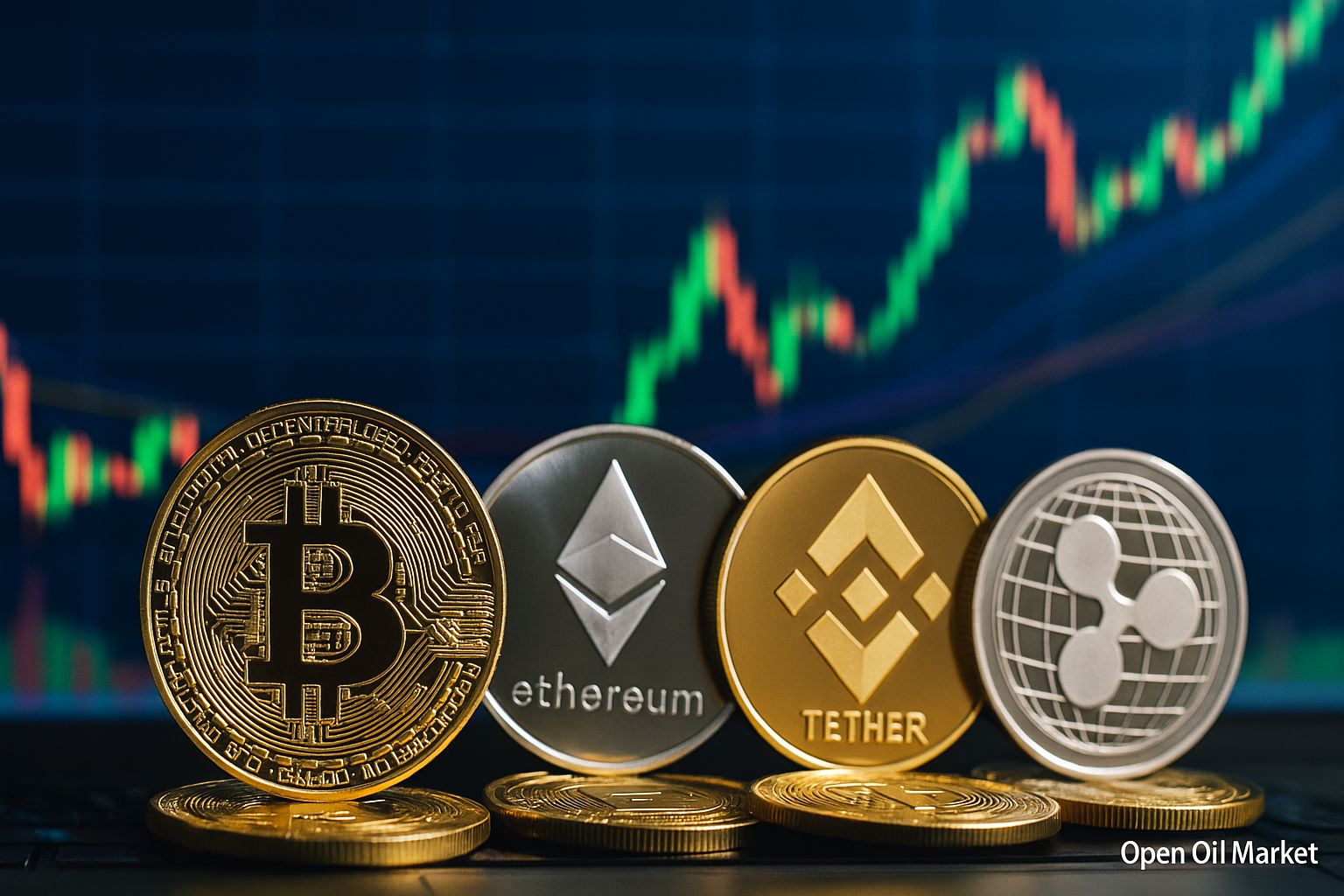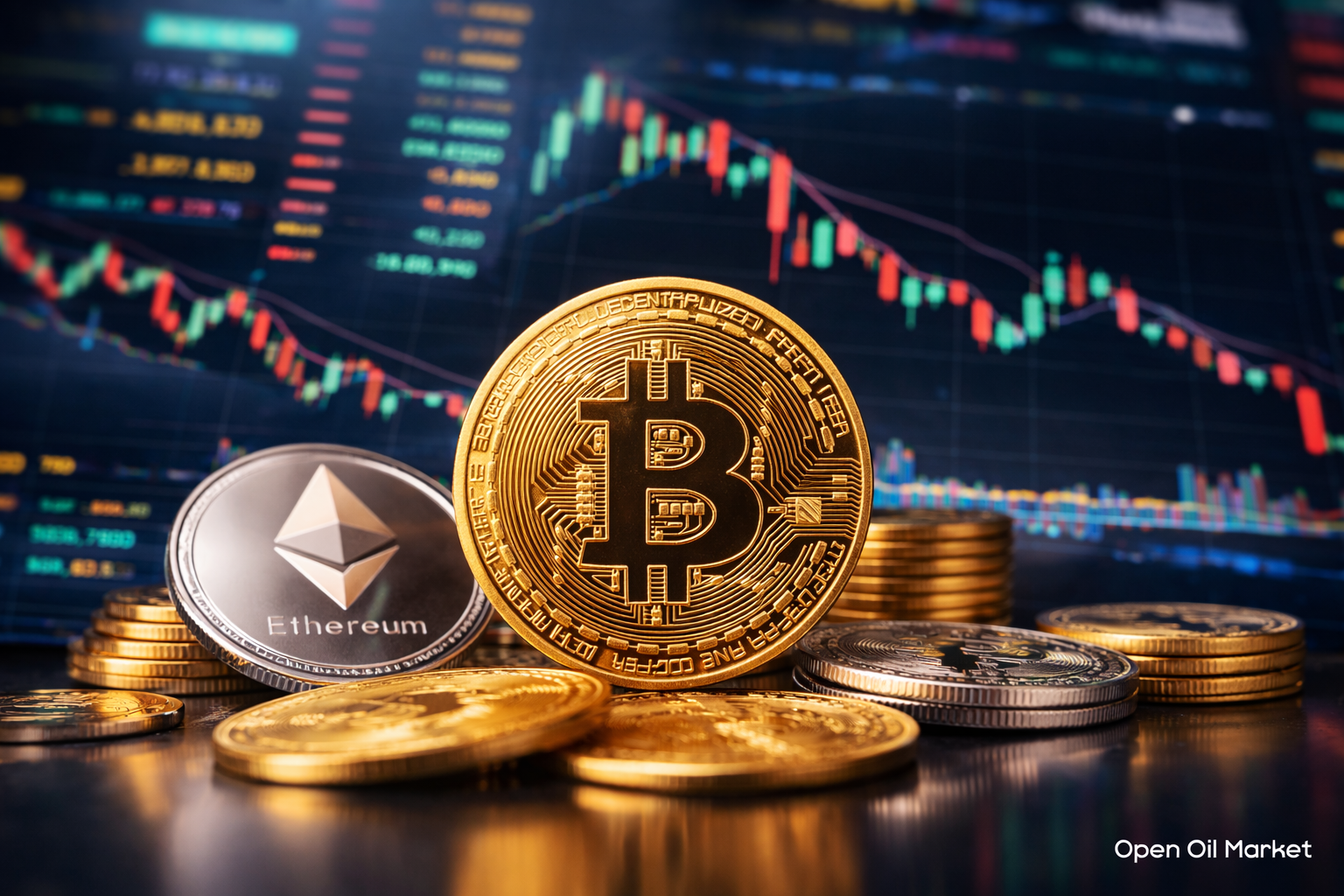
Current Cryptocurrency News as of October 29, 2025: Bitcoin, Altcoins, Market Trends, and Predictions for Investors
The cryptocurrency market is demonstrating steady growth as we approach the middle of the week: Bitcoin is trading near record highs, with leading altcoins following suit. Investors are exercising cautious optimism amid improving macroeconomic conditions and anticipation of the Federal Reserve's crucial interest rate decision, which will be announced today. The total market capitalization of cryptocurrencies has reached approximately $3.9 trillion, almost recovering from the decline experienced at the beginning of October. The Fear and Greed Index has moved out of the "fear zone" and risen to a neutral level (51 out of 100), reflecting decreased concerns and increased interest in riskier assets.
Bitcoin Nearing New Heights
The flagship cryptocurrency Bitcoin (BTC) has confidently rebounded after a dip in the middle of the month and is now trading around $114,000. In recent days, the BTC price surpassed $116,000—its first time since the market crash on October 10. The decline at that time was triggered by President Donald Trump's announcement of 100% tariffs on goods from China, which led to a wave of sell-offs. However, clarifications from the White House indicating that China might avoid these tariffs helped Bitcoin quickly regain lost ground.
Currently, the BTC price is only ~10% below its all-time high (around $126,000 reached in early October). The market is consolidating: the price range has tightened to levels between $105,000 and $113,000, resistance is noted around $115,000, and strong support is at the psychological mark of $100,000. Over the past week, Bitcoin has gained about 5% and has a chance to finish October in positive territory. Bitcoin's market dominance is approximately 59%, marking its highest level in recent years and underscoring Bitcoin's pivotal influence on the entire cryptocurrency market.
Ethereum and Altcoins Gaining Momentum
The second-largest crypto asset, Ethereum (ETH), is also displaying positive dynamics. The ETH price hovers around $4,200, bouncing back from the lows of previous weeks (last week, Ether reached $4,250). Although the current values are approximately 15% below the all-time high (nearly $5,000 in August), Ethereum has increased by more than 60% over the past year. Ethereum remains a key platform in the decentralized finance (DeFi) ecosystem and blockchain applications (including NFTs), sustaining high demand for its token. Following the network's transition to the Proof-of-Stake algorithm in 2022, Ethereum has become more energy-efficient, and its issuance model renders it a potentially deflationary asset under high load.
Most other altcoins are also in the "green zone." Some minor tokens are showing double-digit growth in a single day (for example, Pi Network has increased by over 30%), indicating a return of speculative activity. There are few clear underperformers in the market—even high-risk coins are maintaining their positions. Major altcoins like Binance Coin (BNB), XRP, Cardano (ADA), Solana (SOL), and others are steadily rising alongside the leaders. The meme cryptocurrency Dogecoin (DOGE) continues to hold its place among the largest coins.
Macroeconomic and Regulatory Factors
External conditions continue to affect the sentiment in the cryptocurrency market. A key event of the day will be the U.S. Fed meeting on October 29, where it is expected that the regulator will announce a reduction in the key interest rate for the first time in several years. This decision will signify a shift toward a more accommodative monetary policy. Analysts predict that a dovish tone from the Fed will provide additional momentum for cryptocurrency prices, as lower rates enhance the appeal of riskier investments. However, if the central bank refrains from easing or issues stern statements, spikes in volatility and profit-taking are not excluded in the market.
A recent example of the influence of policy was observed in early October when Trump's tariff announcement caused panic selling: Bitcoin and other assets experienced sharp declines. Later, hints of a compromise (the U.S. readiness to postpone the implementation of tariffs) contributed to the market's rebound. Overall, the Trump administration is now pursuing a more favorable policy for the crypto industry: in the first year of the new presidential term, laws were enacted that improved legal clarity, and pardons were issued for several industry participants. Along with the launch of European regulation MiCA and supportive stances from countries like the UAE and Singapore, this creates a positive backdrop for the further development of the market.
Institutional Interest and Capital Inflow
Since 2024, following the approval of the first spot Bitcoin ETFs in the U.S., interest from large investors in digital assets has notably increased. In recent weeks, there has been a record inflow of capital into cryptocurrency funds—approximately $450 million in one week, with about $324 million entering the Bitcoin ETF managed by BlackRock. Even against the backdrop of the recent downturn, institutions have been hesitant to exit the market: the total assets under management in the largest Bitcoin funds remain close to their highs. This indicates the confidence of major players and adds stability to the market. The increasing share of institutional investors also enhances liquidity and gradually reduces volatility, strengthening trust in cryptocurrencies among all categories of investors.
Top 10 Most Popular Cryptocurrencies
Below are the ten most popular and largest cryptocurrencies as of today, along with a brief description of each:
- Bitcoin (BTC) – the first and largest cryptocurrency, often referred to as "digital gold." Bitcoin emerged in 2009 and has since become a recognized store of value and hedge against inflation. It has a limited supply (21 million coins) and still dominates the cryptocurrency market.
- Ethereum (ETH) – the second-largest cryptocurrency and leading smart contract platform. It underpins the DeFi ecosystem and numerous blockchain applications (including NFTs). The Ether token is used for fees and operations on the network. Since transitioning to Proof-of-Stake, Ethereum has become more energy-efficient, and its issuance model makes it a potentially deflationary asset under high demand.
- Tether (USDT) – the largest stablecoin pegged to the U.S. dollar at a 1:1 ratio. USDT serves as a digital equivalent of the dollar and is widely used by traders to hedge against volatility and for transactions across exchanges. The issuance of Tether is supported by reserve assets, maintaining its peg to $1.
- Binance Coin (BNB) – the native token of the largest cryptocurrency exchange Binance and the base asset of the BNB Chain blockchain. BNB is used to pay trading fees on the exchange with discounts and in various applications within the Binance ecosystem (including participation in new projects). Due to the scale of the Binance platform, the BNB token ranks among the leaders by market capitalization.
- USD Coin (USDC) – the second-largest stablecoin, also pegged to the U.S. dollar. It is issued by the Centre consortium (Circle and Coinbase) with an emphasis on reserve transparency. USDC is widely used in the DeFi sector and for transactions between platforms, ensuring a stable exchange rate around $1.
- XRP (Ripple) – the token of the Ripple payment network, created for fast and cheap international transfers. It serves as an intermediary currency for exchanges between various fiat currencies, targeting banks and payment systems. Ripple's recent victory in court against the SEC has removed regulatory uncertainty and increased interest in XRP.
- Cardano (ADA) – a blockchain platform developed with a focus on a scientific approach and formal verification. It offers smart contract functionality and decentralized applications, operating on the Proof-of-Stake Ouroboros algorithm. The ADA cryptocurrency is used for staking and fee payment; the project attracts investors with its long-term development roadmap and active community.
- Solana (SOL) – a high-speed blockchain network with low fees, popular for DeFi and NFT applications. It can process thousands of transactions per second, making it attractive to developers of decentralized applications. Despite technical failures in 2022, Solana has recovered and returned to among the largest crypto assets.
- Dogecoin (DOGE) – the most famous meme cryptocurrency, which started as a joke but has gained a large following. It has unlimited issuance and high inflation, yet continues to hold strong market positions due to its viral popularity and support from prominent entrepreneurs (e.g., Elon Musk). It is used for small online payments and tips, symbolizing the influence of meme culture on the market.
- Tron (TRX) – a blockchain platform with high throughput, widely used for the issuance and transfer of stablecoins (a significant portion of USDT circulates in the Tron network due to low fees). The TRX token is used for transaction payments and operating decentralized applications within the Tron ecosystem. Tron remains among the market leaders.
Thus, by the end of October 2025, the cryptocurrency market is confidently recovering from recent upheavals. Bitcoin and leading altcoins are trading near local highs, and institutional support is strengthening trust in the industry. Investors continue to closely monitor the actions of regulators and macroeconomic events—their outcomes will determine whether the current rally transitions into sustained market growth by the end of the year.




